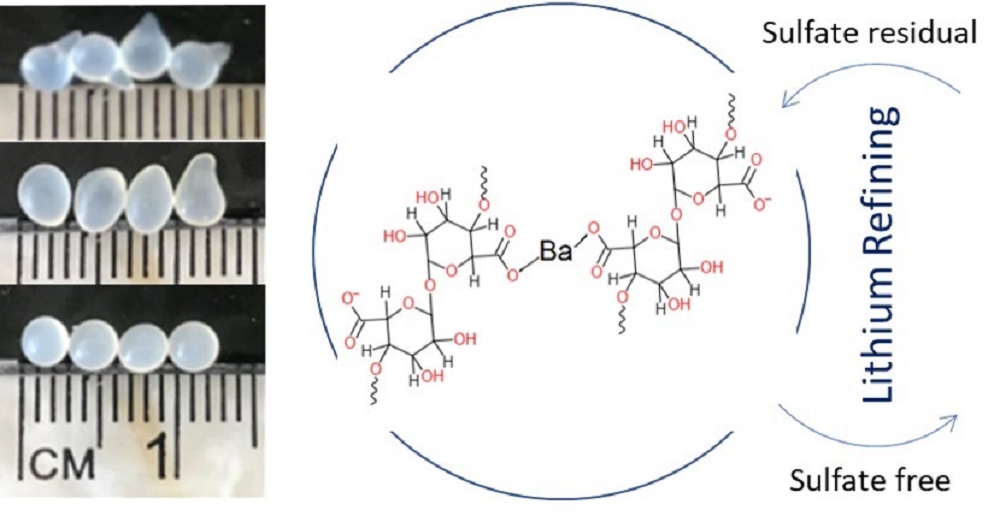The demand for lithium-ion batteries has grown with the popularity of electric cars and mobile devices [
1]. The cathode of lithium-ion batteries uses lithium metal oxide, which is made from lithium compounds extracted from lithium deposits, such as high purity lithium hydroxide or lithium carbonate. Apart from brines, rock deposits are the most common form of lithium particularly in Australia, Canada, and China [
2]. The conventional way to extract lithium from pegmatite containing spodumene [
3] includes calcination at above 1050 °C to loosen the lattice to form
b-spodumene, followed by leaching with concentrated sulfuric acid [
4] to extract the lithium. The leaching process results in a lithium sulfate concentrate. This is then purified and reacted with sodium carbonate or calcium hydroxide to produce lithium carbonate [
5] or lithium hydroxide [
6]. A sulfate content below 0.01 wt-% must be obtained within the solid product, which corresponds to a sulfate concentration of less than 20 mg·L
−1 in a saturated solution of 10.9 wt-% lithium hydroxide at 20 °C for battery grade lithium production [
7].










